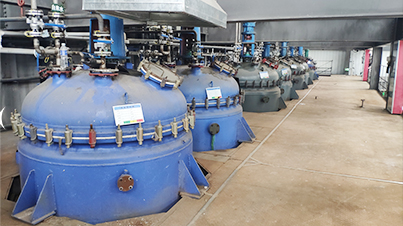flocculant water treatment
The Role of Flocculants in Water Treatment
Water is an essential resource for all forms of life, but ensuring its cleanliness and safety is an ongoing challenge faced by municipalities, industries, and agriculture. Among the various methods employed in water treatment, flocculation has proven to be one of the most effective. This process involves the aggregation of fine particulates into larger clusters, or flocs, that can be more easily removed from water, which ultimately improves its quality.
The Role of Flocculants in Water Treatment
The mechanism of flocculation begins when flocculant molecules are added to the water. These molecules have a dual nature, possessing both hydrophilic (water-attracting) and hydrophobic (water-repelling) properties. As the flocculant disperses through the water, it adsorbs onto the surface of suspended particles, neutralizing their charges and causing them to clump together. This process is facilitated by gentle mixing, after which the larger aggregates settle out of the water more rapidly than the smaller particles.
flocculant water treatment

The effectiveness of flocculants can significantly improve water treatment processes including sedimentation, filtration, and even disinfection. For example, in municipal water treatment plants, flocculants are often employed in tandem with sedimentation tanks where the larger flocs formed settle to the bottom, allowing for clearer water to be drawn off the top. Additionally, in wastewater treatment, flocculants play a crucial role in removing contaminants, heavy metals, and bacteria from industrial discharges before they are released back into the environment.
Despite their efficacy, the use of flocculants is not without concerns. Potential residual chemicals can pose risks to human health and aquatic ecosystems if not properly managed. Therefore, water treatment facilities often implement rigorous monitoring and management practices to minimize any negative impacts. Moreover, the development of biodegradable and eco-friendly flocculants is a growing area of research aimed at addressing these environmental concerns.
In conclusion, flocculants are a vital component of modern water treatment systems. They enhance the removal of suspended solids and improve water clarity, making it suitable for consumption and environmental discharge. As water scarcity becomes a pressing global issue, the continued improvement of flocculation technologies and practices will be essential for sustainable water management. The ongoing research and innovation in this field will not only enhance the effectiveness of water treatment processes but also contribute to protecting our precious freshwater resources for future generations.
-
Water Treatment with Flocculant Water TreatmentNewsJun.12,2025
-
Polymaleic AnhydrideNewsJun.12,2025
-
Polyaspartic AcidNewsJun.12,2025
-
Enhance Industrial Processes with IsothiazolinonesNewsJun.12,2025
-
Enhance Industrial Processes with PBTCA SolutionsNewsJun.12,2025
-
Dodecyldimethylbenzylammonium Chloride SolutionsNewsJun.12,2025





